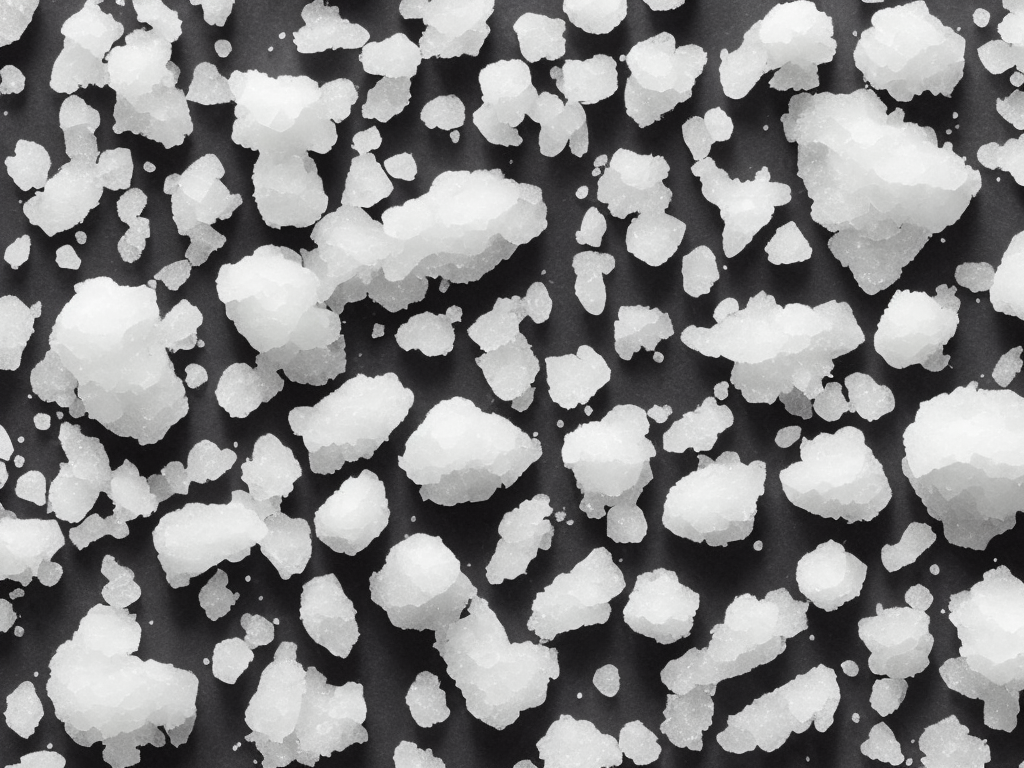
Introduction
In chemistry, a salt is an ionic compound composed of positively and negatively charged ions. It forms when an acid reacts with a base. There are various types of salts, such as double salts and complex salts. This article aims to explain the differences between the two types of salts.
Double Salt
Double salts are formed when two or more simple salts combine chemically to form a new compound. These salts retain their individual identities and can be separated back into their original components by various physical methods. An example of a double salt is potassium aluminium sulfate dodecahydrate, KAl(SO4)2.12H2O, commonly called alum.
Double salts are typically formed by the interaction of a mixture of two salts during crystallization. Double salts usually exhibit different characteristics compared to their parent salts, such as different solubility, melting point, and hydration. These characteristics arise due to the different crystal structure of the double salt.
Double salts are commonly used in the preparation of coloured pigments, as well as in medicine and the food industry.
Complex Salt
Complex salts are formed from a central metal ion and one or more ligands that surround the metal ion, forming a coordination complex. These salts do not retain their individual identities and cannot be easily separated into their original components. Complex salts can be either neutral or charged.
The central metal ion in a complex salt typically has a coordination number greater than four, which means that it is surrounded by more than four ligands. The coordination number depends on the size of the metal ion, the size of the ligand, and the charge of the ion.
Complex salts usually exhibit different characteristics compared to the parent metal ion and ligand, such as different solubility, melting point, and colour. These characteristics arise due to the different electron arrangement in the complex salt compared to the parent compounds.
Complex salts find widespread use in catalysis and as materials with magnetic, optical and electrical properties.
Differences Between Double Salt and Complex Salt
The primary difference between double salts and complex salts is the type of chemical bonding that holds the salts together. Double salts are held together by ionic bonds between the individual ions, whereas complex salts are held together by coordination bonds between the metal ion and the ligands.
The other notable difference is the ease of separation. Double salts can be separated back into their original components through various physical methods, while complex salts cannot be easily separated into their original components.
Also, double salts are usually composed of two different types of salts, while complex salts are composed of a central metal ion and one or more ligands.
Physical Characteristics
Double salts usually exhibit different physical properties compared to their parent salts, such as different solubility, melting point, and hydration. These changes arise due to the different crystal structure of the double salt. For example, potassium alum is soluble in water, while potassium chloride, its parent salt, is not soluble in water.
This change in physical properties is due to different crystal structure, which determines the strength and type of intermolecular forces in the salt. The crystal structure of double salts is such that the intermolecular forces are different compared to the parent salts. This can result in changes in solubility, melting point, and other physical properties.
Complex salts also exhibit different physical properties compared to their parent metal ion and ligand, such as different solubility, colour, melting point, and magnetic properties. These changes arise due to different electron arrangement, which determines the strength and type of intermolecular forces in the complex salt.
Type of Reaction
Double salts are formed from simple salts through a process known as isomorphous replacement or double decomposition reaction. Typically, a double salt is formed when two or more simple salts combine chemically to form a new compound. During the formation of a double salt, there is a complete replacement of one or more ions in each of the simple salts by ions from the other salt.
On the other hand, complex salts are formed through a process known as coordination complexation, which involves a chemical reaction between a metal ion and one or more ligands. During the process of complexation, the metal ion forms a coordination bond with the ligands to form a coordination complex.
Conclusion
In conclusion, double salts and complex salts are two different types of salts that have different chemical compositions, physical properties, and formation processes. Double salts are formed from a combination of two or more simple salts, while complex salts are formed from a central metal ion and one or more ligands.
Double salts retain their individual identities and can be separated back into their original components through various physical methods, while complex salts cannot be easily separated into their original components.
Both types of salts have various applications in different fields of research, including medicine, food technology, catalysis, materials science and chemistry. Understanding the differences between these two types of salts can help scientists to better understand the mechanisms involved in chemical reactions that involve salt formation.
 Self-Instruct
Self-Instruct